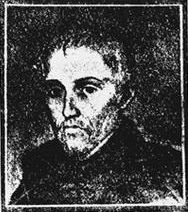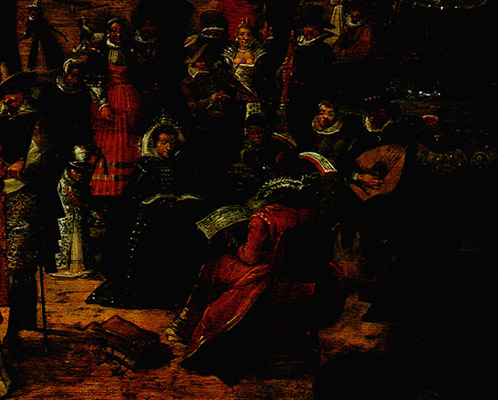Victoria was the greatest Spanish composer of the sixteenth
century. A profoundly religious man, he wrote only sacred music.
More than anywhere else in Europe, Spain was gripped at this time
by a strident, zealous Catholicism, most evident in the purges of
the Inquisition, in Ignatius Loyola's foundation of the Jesuit
order in 1534, and in the creation of several new monastic orders.
Such deep-seated religious fervour permeated all aspects of life,
including the composition of church music. Victoria's music is a
reflection of this highly charged and passionate attitude.
Born in Avila, the seventh of 11 children, Victoria grew up
with religion an integral part of his life. Two of his uncles were
priests, one of whom took care of the young Victoria after the
death of his father when he was nine. He went to study at a local
Jesuit school, sang in the choir of Avila Cathedral and built up a
strong reputation locally.
When his voice broke he was encouraged by both the Cathedral
and King Philip II of Spain to further his studies in Rome. There
he joined the Jesuit Collegio Germanico, where he trained for the
priesthood as well as practising music.
Palestrina was at that time the Maestro di Cappella at the
nearby Scininano Romano, and it is likely that he taught Victoria;
undoubtedly some sort of exchange of musical ideas took place
between the two composers.
Victoria remained in Rome for over 20 years. He became a priest
in 1575, and held several appointments at churches and religious
institutions. Equally valuable to his musical development was the
fertile contact with other composers living in or visiting Rome.
He published a number of particularly beautiful books of his
music, and in a dedication of Missarum libri duo to Philip
II in 1583 he expressed a desire to return to his beloved Spain.
In 1587 his wishes were granted when the King appointed him
chaplain to the Dowager Empress Maria, widow of Maximilian II, who
lived in retirement in Madrid. Victoria served at her convent for
the rest of his life. In 1603 the Dowager Empress died and
Victoria composed her Requiem, the mighty Officium defunctorum.
Little more was heard from him before his own death in 1611.
Victoria's Masses are for four to 12 voices, often divided up
into two or three choirs — an innovative arrangement. The rest of
his work includes motets, Magnificats, and a variety of other
sacred works. His music expresses the ardent, fatalistic
Catholicism peculiar to his country and time. While the
Officium defunctorum is deeply reflective, Masses such as О
quam gloriosum and Ave maris Stella arc more joyful,
holding out more hope for this life, as opposed to the next; all
demonstrate his passionate faith.
|



No comments:
Post a Comment